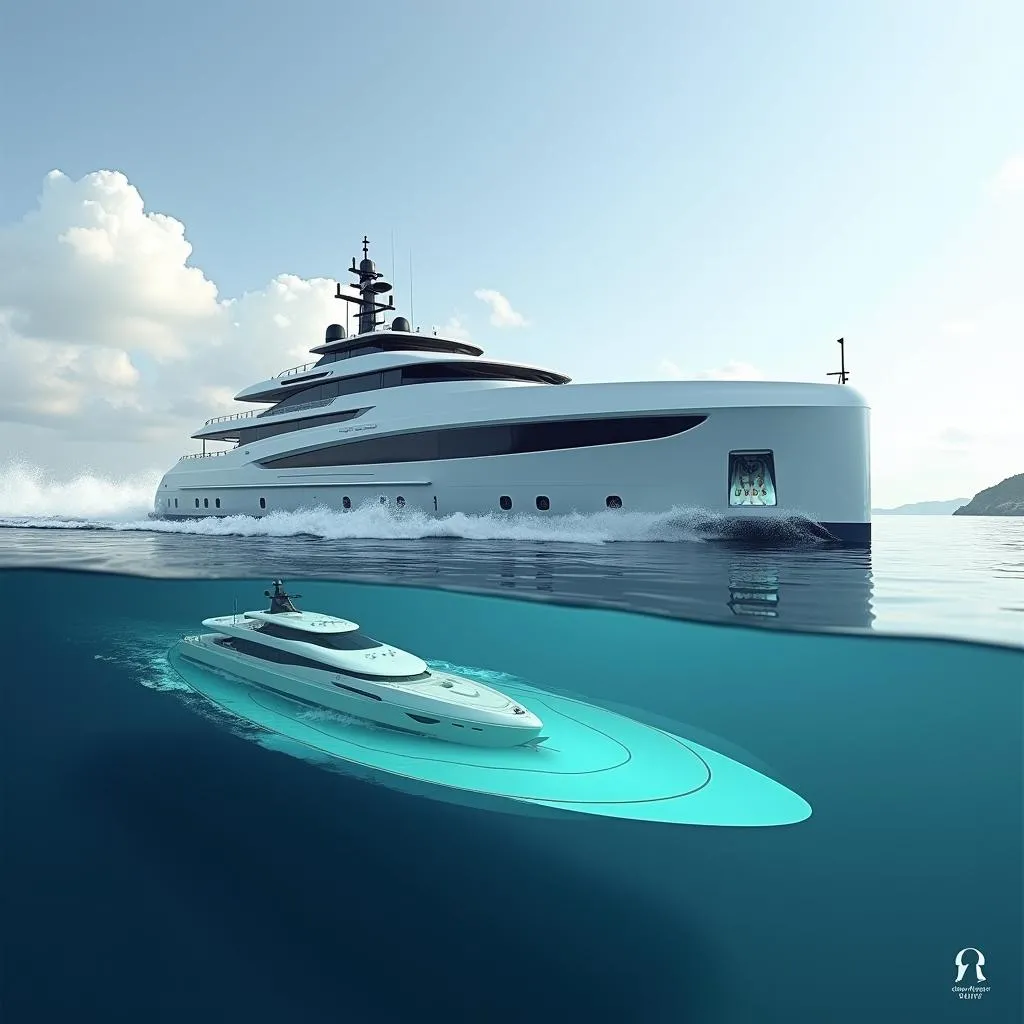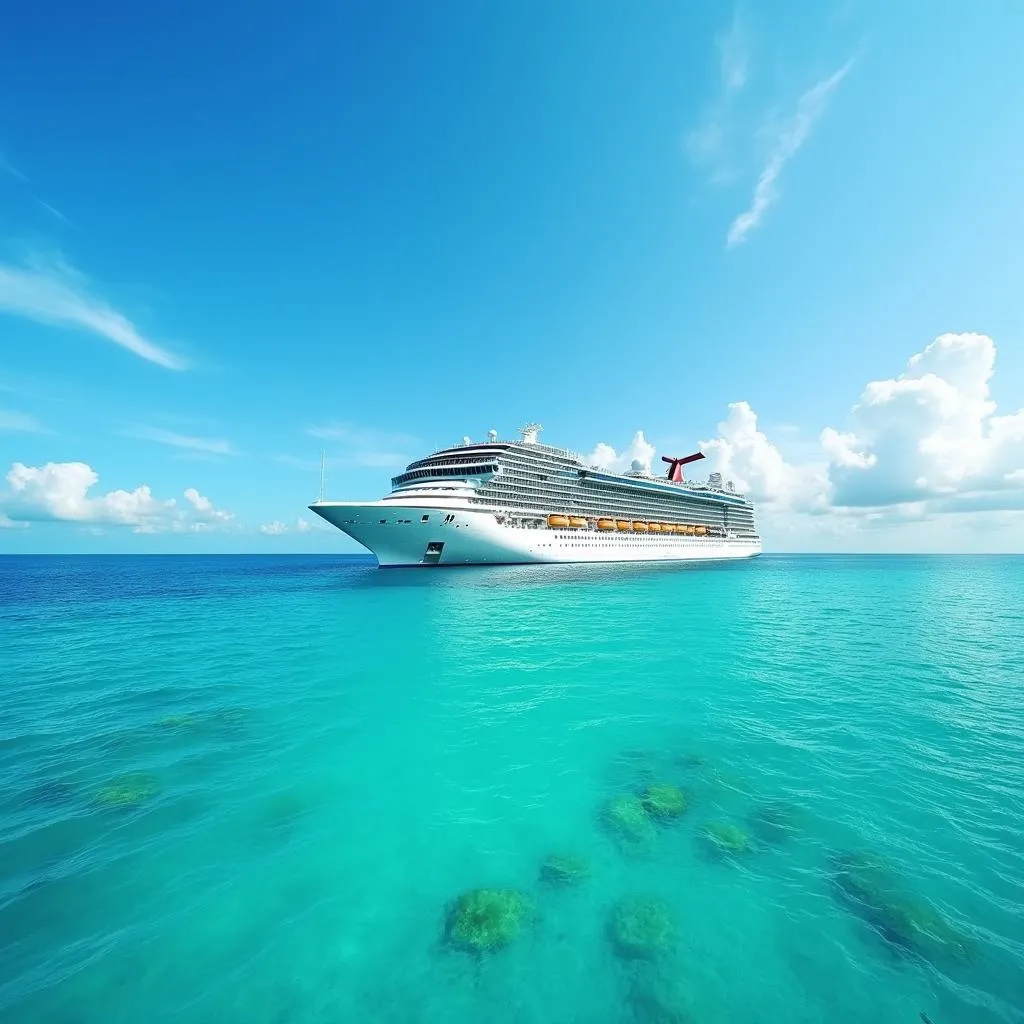Have you ever stood on the shore, watching a massive cargo ship disappear over the horizon and wondered, “Just how fast can that thing go?” It’s a question that has captivated seafarers and landlubbers alike for centuries. The answer, as it turns out, is a bit more complex than you might expect. Just like cars on the road, the speed of a ship can vary greatly depending on several factors. Let’s dive in and explore the fascinating world of ship speed!
Factors Influencing Ship Speed
While we don’t often think of ships needing to obey a “speed limit” like we do with cars, there are many elements that determine how quickly a vessel can navigate the waves.
1. Ship Type and Design
Different ships are designed for different purposes, and this greatly influences their speed capabilities.
- Cargo Ships: These behemoths prioritize carrying massive amounts of goods over speed. A typical cargo ship might travel at an average speed of 10-25 knots (11-29 mph).
- Cruise Ships: Built for luxury and leisure, these floating cities prioritize passenger comfort and often cruise at speeds similar to cargo ships, around 20 knots (23 mph). Imagine enjoying a leisurely breakfast as the majestic Alaskan coastline glides past!
- Speed Boats: As their name suggests, these vessels are all about reaching high speeds. With sleek designs and powerful engines, they can zip across the water at speeds exceeding 70 knots (80 mph) or more!
2. Engine Power and Propulsion
Just like the engine in your car, the power and type of engine play a crucial role in a ship’s speed.
- Diesel Engines: Most large commercial ships rely on powerful diesel engines, similar to those found in semi-trucks but on a much larger scale.
- Gas Turbines: Some high-speed vessels, like military ships or ferries, utilize gas turbines for their impressive power-to-weight ratio.
- Propulsion Systems: The way the engine’s power is transferred to the water is another key factor. Traditional propellers are common, but some modern ships utilize water jets for increased maneuverability and speed at higher speeds.
3. Water Resistance and Hull Design
Moving through water creates drag, a force that resists movement. The shape and design of a ship’s hull (its underwater body) significantly impact how efficiently it can cut through the water.
- Hydrodynamic Design: Shipbuilders invest considerable effort in creating hulls that minimize drag and maximize efficiency. Sleek, streamlined designs are essential for achieving higher speeds.
 Ship hull design for speed and efficiency
Ship hull design for speed and efficiency
4. Weather and Sea Conditions
Imagine trying to drive your car through a hurricane – you wouldn’t get very far, would you? Ships face similar challenges.
- Wind: A strong tailwind can give a ship a significant speed boost, while headwinds act like a giant invisible wall, slowing it down.
- Waves: Rough seas and large waves create resistance and can force ships to slow down to avoid damage or discomfort for passengers.
5. Cargo Load
The weight a ship carries plays a major role in its speed.
- Cargo Ships: A fully loaded cargo ship will travel much slower than one sailing with empty cargo holds.
- Cruise Ships: Similarly, a cruise ship packed with passengers and supplies will have a lower top speed than when it’s sailing with fewer people on board.
Planning Your Voyage: Understanding Travel Times
Knowing how fast ships can travel is not just a matter of satisfying curiosity. It has practical implications for anyone planning a journey by sea.
- Cruise Vacations: When booking a cruise, understanding typical ship speeds can help you estimate travel times between destinations. Imagine setting sail from Miami and gliding towards the Bahamas, the warm turquoise waters beckoning you closer with every passing hour.
 Luxury Cruise Ship sailing on turquoise Caribbean Sea
Luxury Cruise Ship sailing on turquoise Caribbean Sea
- Cargo Transportation: Businesses involved in international trade rely on accurate shipping times to manage inventory, production, and delivery schedules. A slight delay in a shipment of coffee beans from South America, for example, could impact the availability of your favorite morning brew!
FAQs About Ship Speed
Q: What is the fastest ship in the world?
A: The title of “fastest ship” is a bit tricky, as different classes of vessels have different speed records. However, the Spirit of Australia, a jet-powered hydroplane, holds the record for the fastest speed on water, reaching an astonishing 317.6 mph (511.11 km/h) in 1978!
Q: How do ships measure their speed?
A: Ships use a unit of speed called a “knot,” which is equivalent to one nautical mile per hour (approximately 1.15 statute miles per hour).
Q: Are there speed limits for ships?
A: While there are no set speed limits like those on roads, ships must adhere to speed restrictions in certain areas, such as harbors and channels, to ensure safety and prevent accidents.
Conclusion
From the leisurely pace of a cargo ship to the exhilarating rush of a speedboat, the world of ship speed is as diverse as the vessels themselves. Understanding the factors that influence ship speed can enhance our appreciation for the complexities of maritime travel and the engineering marvels that allow us to traverse the vast expanse of the oceans. So, the next time you see a ship on the horizon, take a moment to consider the forces at play that determine its journey across the waves.